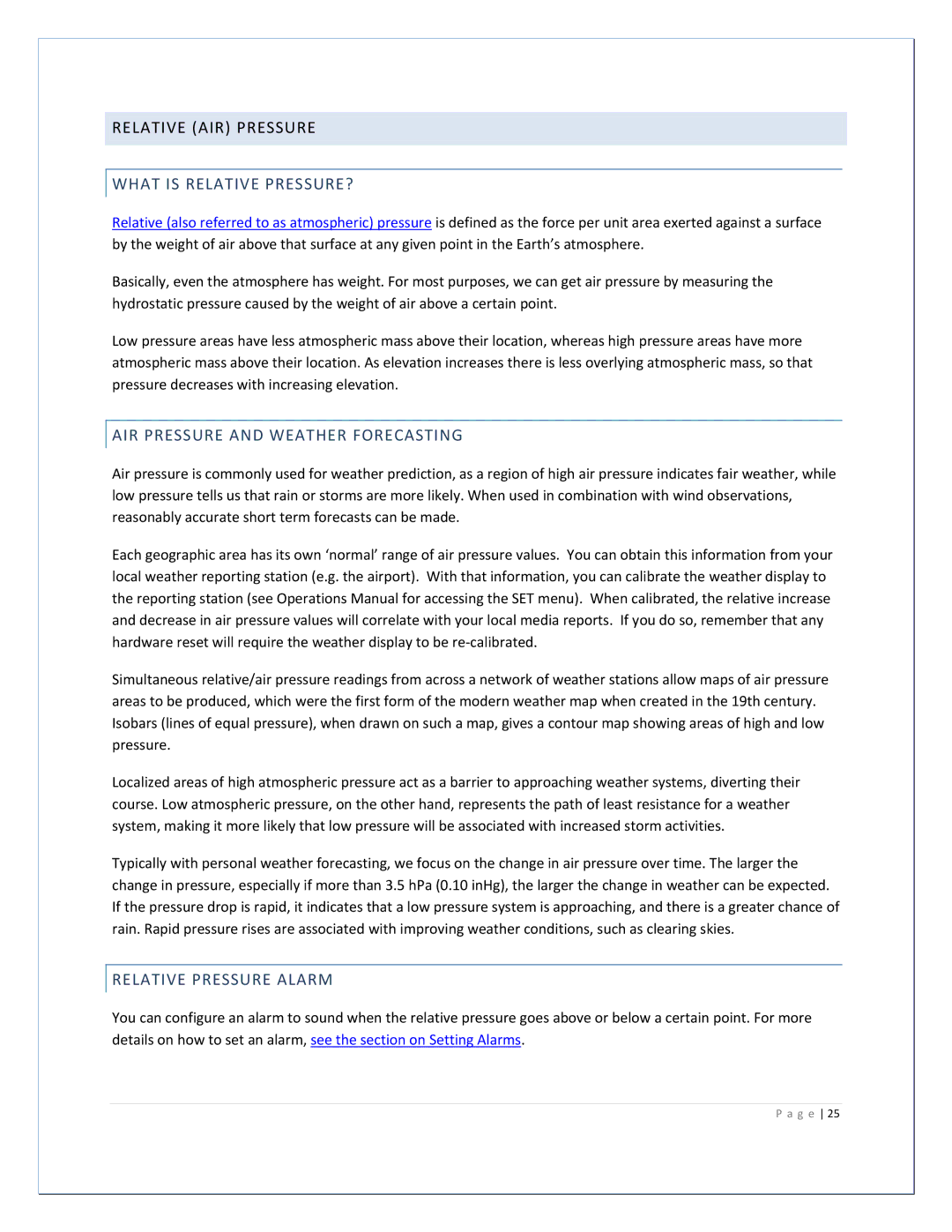
RELATIVE (AIR) PRESSURE
WHAT IS RELATIVE PRESSURE?
Relative (also referred to as atmospheric) pressure is defined as the force per unit area exerted against a surface by the weight of air above that surface at any given point in the Earth’s atmosphere.
Basically, even the atmosphere has weight. For most purposes, we can get air pressure by measuring the hydrostatic pressure caused by the weight of air above a certain point.
Low pressure areas have less atmospheric mass above their location, whereas high pressure areas have more atmospheric mass above their location. As elevation increases there is less overlying atmospheric mass, so that pressure decreases with increasing elevation.
AIR PRESSURE AND WEATHER FORECASTING
Air pressure is commonly used for weather prediction, as a region of high air pressure indicates fair weather, while low pressure tells us that rain or storms are more likely. When used in combination with wind observations, reasonably accurate short term forecasts can be made.
Each geographic area has its own ‘normal’ range of air pressure values. You can obtain this information from your local weather reporting station (e.g. the airport). With that information, you can calibrate the weather display to the reporting station (see Operations Manual for accessing the SET menu). When calibrated, the relative increase and decrease in air pressure values will correlate with your local media reports. If you do so, remember that any hardware reset will require the weather display to be re‐calibrated.
Simultaneous relative/air pressure readings from across a network of weather stations allow maps of air pressure areas to be produced, which were the first form of the modern weather map when created in the 19th century. Isobars (lines of equal pressure), when drawn on such a map, gives a contour map showing areas of high and low pressure.
Localized areas of high atmospheric pressure act as a barrier to approaching weather systems, diverting their course. Low atmospheric pressure, on the other hand, represents the path of least resistance for a weather system, making it more likely that low pressure will be associated with increased storm activities.
Typically with personal weather forecasting, we focus on the change in air pressure over time. The larger the change in pressure, especially if more than 3.5 hPa (0.10 inHg), the larger the change in weather can be expected. If the pressure drop is rapid, it indicates that a low pressure system is approaching, and there is a greater chance of rain. Rapid pressure rises are associated with improving weather conditions, such as clearing skies.
RELATIVE PRESSURE ALARM
You can configure an alarm to sound when the relative pressure goes above or below a certain point. For more details on how to set an alarm, see the section on Setting Alarms.
